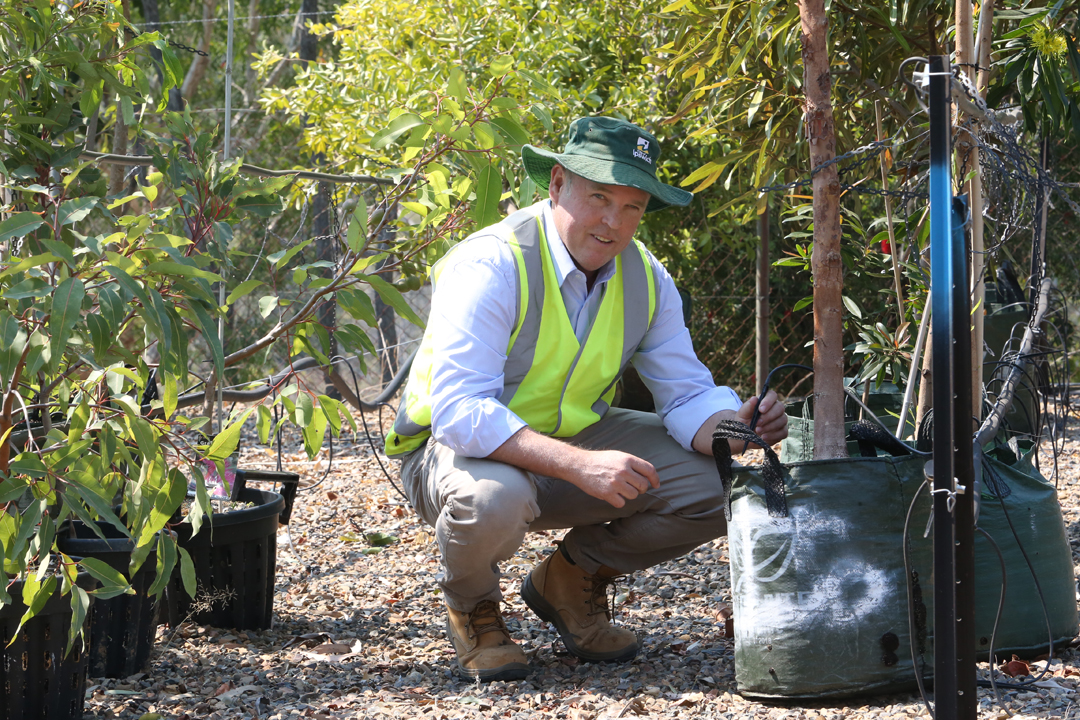James Hilyard is Ipswich City Council’s Infrastructure and Environment Department, Acting City Maintenance manager.
James is a horticulturalist, arborist and holds a masters degree in sustainability.
In this month’s column, James shares his tips on how to reduce fire risk in your garden.
Fires need fuel to burn and whether your home and garden is in the middle of Ipswich or on a rural property, you must prepare to give your home the best chance of survival if a bush fire sweeps through.
As we have seen in recent weeks the conditions we are experiencing at the moment are perfect conditions for fires.
The dry weather and strong winds coupled with the lack of rain on the horizon has led to an unseasonably early bush fire season.
What can we do?
Thick leafy green plants are harder to burn and are less likely to catch fire if, for example, some hot embers are blown their way.
Trees such as Brachychiton acerifolius (ironically called the Flame Tree), Pistacia chinensis (Chinese pistache) and Beaucarnea recurvate (Ponytail Palm), as well as fruit trees are considered the safest to plant near houses.
They tend to have a high moisture content and low oil content which makes them much less flammable and they can even help protect your house from radiant heat.
Ipswich
Native
Plant
Guides
They can act as a physical barrier to heat as well as deflecting hot embers while their leaves provide a moisture barrier to the fire.
I suggest that you consider getting out in the garden this weekend and start ticking off this list.
Fire reduction to do list
- Rake up any leaf litter, dry sticks, debris
- Any combustible material should be removed from the garden and composted
- Consider mulching with stones or pebbles instead of wood mulches
- Clean your gutters and make sure they are free from anything that can burn
- Remove any dead wood and loose bark from trees and shrubs near your house
- Cut any long dry grass or weeds and remove the clippings
- Cut back trees and shrubs from your house especially if they are highly flammable like conifers and eucalyptus, and prune any branches that overhang the roof or tough the walls
- Install lawns and succulent type groundcovers in gardens close to your house to reduce fuel loads
- Make sure your wheelie bins are away from your house or garage, if they do catch fire they are difficult to extinguish.
- Choose trees with smooth trunks for planting close to buildings
With a hot fire like the ones we have seen recently in the Gold Coast Hinterland even old growth rainforests that traditionally act as a green firebreak have burnt.
If you live in a rural area you may have additional specific considerations such as maintaining a fire break and insuring you have good access to your property so that emergency services can locate and access your house.
Reducing fuel loads may also include strategic grazing, slashing or herbicide use.
Most importantly have a bushfire survival plan and make sure everyone in the household knows what to do in a fire.
Meanwhile, in the immortal words of poet Dorothea Mackellar ‘I love a sunburnt country’ but please send some rain.
Read also:
>>> Gardening with James Hilyard: No room to garden? Think miniature
>>> Gardening with James Hilyard: Winter pruning
>>> Gardening with James Hilyard: Selecting the right plants for your yard
>>> Gardening with James Hilyard: Mulch, Mulch, Mulch

